How to Maintain a Wood Fence
July 5, 2024
In Texas, the summer months are high in heat and humidity, which can take their toll on any hardscape feature, especially maintaining a wood fence. Being proactive with fence maintenance is vital. Here are a few steps and tips that we recommend.
Give Your Fence a Thorough Cleaning
Mother Nature throws an amazing amount of dirt, grime, and other debris at your fence – most of which will stick to it. When initially addressing how to maintain a wood fence, removing this layer of dirt is the first place to start. A professional power washer may not leave it looking new, but it will definitely improve its overall appearance. In addition, a thorough cleaning gives you a fresh base to work with and is necessary to complete any other fence maintenance effectively.
No Matter How Minor, Repair Any Damage
When it comes to outdoor features, freezing temperatures, and the frost/defrost cycle usually tend to do the most damage. This makes it essential to repair even the smallest damage to your fence before the colder temperatures move in. If your wood fence is not repaired and properly protected, water can infiltrate the damaged areas, freeze when the temperatures drop, and then pry apart even the strongest joints. A little fence maintenance and care now can save a lot of aggravation and money.
Clear Debris
Proper fence maintenance includes removing any grass or weeds growing around the bottom of your fence. When they’re too close to your fence, grass, weeds, and other plants create a dark, moist environment that can lead to mold growth and wood rot. Remove or cut any loose or low-hanging tree limbs that touch or almost touch your fence. This ensures they don’t rub up against the fence or cause damage during a severe storm.
Check for Weathering and Rotting
Now that the fence is cleaned and the debris is cleared, it’s time to inspect your fence for any signs of weathering. Looks for signs of rotting or damage from termites or other insects. Inspect fence posts and panels to ensure they are stable. Grab each post from the top and apply pressure to all sides to check posts for stability. A secure post won’t move under pressure. If it does move, it should be repaired or replaced as soon as possible.
Stain for Added Protection
The final step is staining or re-staining your fence. The staining process not only makes the fence more visually pleasing but also helps to increase its long-term durability. The latest high-tech stains incorporate compounds that color the wood and protect it from UV light, water, and insects, as well as fungal growth.
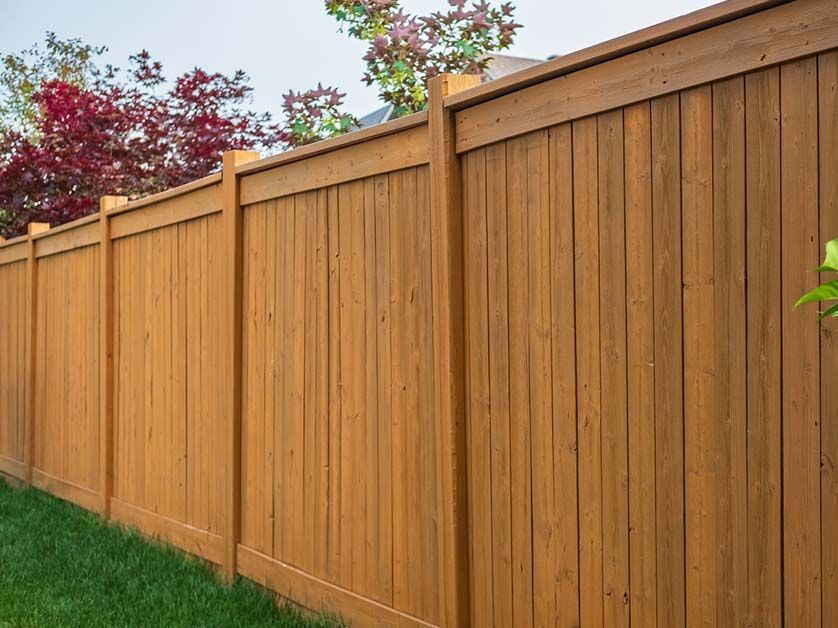
A fence plays a crucial role in providing security, privacy, and aesthetic appeal to your property. Over time, fences can deteriorate due to weather conditions, age, and general wear and tear. If you're unsure whether it's time to invest in a new fence, consider the following factors: 1. Visible Damage and Wear Inspect your fence for signs of damage such as: Rotting or Warping – Particularly in wooden fences, exposure to moisture can lead to rot and warping. Rust and Corrosion – Metal fences may show rust, compromising their structural integrity. Cracks or Splits – These can occur in various materials and are signs of weakening. If these issues are widespread, replacing the fence might be more cost-effective than continued repairs. 2. Stability Concerns A fence that leans or wobbles poses safety risks. This instability can result from weakened posts, soil erosion, or foundational issues. In such cases, installing a new fence ensures both safety and long-term durability. 3. Frequent Repairs Constantly repairing a fence can be both time-consuming and expensive. When maintenance becomes a regular chore, it might be more practical to invest in a new, low-maintenance fence. 4. Changing Needs Your current fence may no longer meet your lifestyle or safety requirements. Consider the following: Enhanced Privacy – Upgrading to a taller or solid-panel fence can provide better seclusion. Increased Security – A sturdier fence with secure gates can deter intruders. Aesthetic Upgrade – Modern materials and updated designs can boost your property's curb appeal. New Family Additions – Whether it’s children, pets, or elderly family members, adding a fence, railing, or gate is a crucial step in protecting your loved ones. Installing a fence for your dog or pet can give you peace of mind, while fenced yards allow children to play safely and freely. 5. Property Value Considerations A well-maintained, attractive fence can significantly enhance your property's value and appeal to potential buyers. If you're considering selling your home, a new fence can be a worthwhile investment. Why Choose Freedom Fence and Gates? At Freedom Fence and Gates, we specialize in delivering high-quality fencing solutions tailored to your specific needs. Our services include: Custom Fence Installations – Designed to complement your property’s style and purpose. Automated Gates – Enhancing convenience and security with modern technology. Railings – Adding safety and elegance to your decks, patios, and staircases. With over 20 years of experience serving Central Texas—including Dripping Springs, Spicewood, Lakeway, and surrounding areas—we’re committed to delivering exceptional craftsmanship and customer service. Get a Free Estimate Today If you're thinking about installing a new fence, let Freedom Fence and Gates help you make the right decision. Contact us today for a free estimate and explore the best fencing options for your property

There’s something timeless and welcoming about a well-built wood fence—especially when it frames the front of your home. At Freedom Fence and Gates, we’re currently working on a beautiful new front yard wood fence for a family in Dripping Springs, Texas. We wanted to give you a behind-the-scenes look at the project—and share why front yard fencing is more important than ever. Why a Front Yard Fence Makes a Difference When most people think of fencing, they picture the backyard. But a front yard wood fence offers a blend of style, function, and comfort that adds real value to your home. Here’s why: Boosted Curb Appeal - Wood fencing provides a warm, natural look that can instantly elevate your home’s exterior. Privacy Without Feeling Closed Off - With the right height and spacing, a wood fence can offer a sense of privacy while keeping your front yard open and inviting. Family & Pet Safety - This fence was designed with safety in mind—keeping children and pets securely inside the yard while creating a buffer from the road and sidewalk. Increased Property Value - A high-quality wood fence is a solid investment. It’s durable, customizable, and attractive to potential buyers. The Build: From Design to Installation This project began with a consultation where the homeowners shared their vision for a natural wood fence that would complement their landscaping and match the rustic charm of their home. Here’s how the installation is progressing: Post Installation - We’re setting pressure-treated posts deep into the ground with concrete for long-term strength—even through Texas storms. Board Selection - We're using high-grade cedar for this project. It’s naturally rot-resistant and holds up beautifully in hot climates. Style Choice - The family chose a horizontal wood fence with a clean, modern look—featuring natural tones that blend seamlessly with the Hill Country surroundings. Gate Setup - A matching wood gate will be added for both convenience and style, with hardware chosen to complement the home’s exterior finishes. Thinking About a Wood Fence for Your Front Yard? Whether you’re looking for a privacy wood fence, automated gate, railing, or a custom fencing solution tailored to your home, Freedom Fence and Gates is here to help. We proudly serve homeowners throughout Texas in Dripping Springs, Lakeway, Spicewood, and surrounding areas with expert craftsmanship and attention to detail. 📞 Let’s bring your vision to life. Contact us today for a free estimate!

Choosing the right type of fencing is an important decision for any property owner. Fences serve many purposes, from providing security and privacy to enhancing curb appeal. At Freedom Fence and Gates, your trusted Dripping Springs fence company, we specialize in helping you find the perfect fencing solution for your home or business. Here’s a guide to the most popular types of fencing to help you make an informed decision. 1. Privacy Fences Privacy fences are designed to create a secluded space, making them ideal for homeowners who value their outdoor sanctuary. Typically built with wood, vinyl, or composite materials, these fences are tall and provide excellent coverage. Privacy fences are perfect for residential properties, offering both functionality and aesthetic appeal while blocking noise and wind. Best for: Residential backyards, gardens, and properties close to neighbors. 2. Iron Fences If you’re looking for elegance and security, iron fences are an excellent choice. These fences are made of durable materials like wrought iron or aluminum. While they don’t provide much privacy, they add a touch of sophistication and enhance the curb appeal of both residential and commercial properties. Best for: Front yards, pools, gardens, and high-end commercial properties. 3. Chain Link Fences Chain link fences are a budget-friendly and durable option. Known for their practicality, these fences are commonly used for commercial properties, sports fields, and large outdoor spaces. While not the most visually appealing, chain link fences can be enhanced with privacy slats or coated in different colors for a more polished look. Best for: Commercial properties, schools, parks, and large outdoor spaces. 4. Vinyl Fences Vinyl fences are a low-maintenance alternative to wood. They are resistant to rot, pests, and weather damage, making them a durable option for long-term use. Available in a variety of styles, vinyl fences can mimic the appearance of wood while offering a clean and modern aesthetic. Best for: Residential properties, especially for those seeking low-maintenance solutions. 5. Wood Fences Wood fences are a timeless and versatile option. They can be customized in height, style, and color to fit your property’s needs. While they require regular maintenance, such as staining or sealing, wood fences offer natural beauty and a warm, inviting look. Best for: Traditional homes, gardens, and properties looking for a classic aesthetic. 6. Automatic Gates and Fences Automatic gates are an excellent addition to any fencing solution, providing security and convenience. They can be paired with privacy fences or ornamental iron fences for a seamless look. With options like swing gates, sliding gates, and remote-controlled access, automatic gates add functionality and sophistication. Best for: Properties prioritizing security and convenience, including driveways and gated entrances. 7. Farm and Ranch Fencing For larger properties in rural areas, farm and ranch fencing provides practical solutions for containing livestock and marking boundaries. Options include split rail, barbed wire, and electric fencing, each tailored to specific needs. These fences are designed for durability and function, often spanning large areas. Best for: Farms, ranches, and large rural properties. How to Choose the Right Fence for Your Property When deciding on a fence, consider these factors: Purpose: Is it for privacy, security, aesthetics, or functionality? Budget: Some materials are more cost-effective than others. Maintenance: Think about the time and effort you’re willing to dedicate to upkeep. Style: Choose a design that complements your property’s architecture. Why Choose Freedom Fence and Gates? At Freedom Fence and Gates, we provide high-quality fencing solutions tailored to your unique needs. As a leading Dripping Springs fence contractor, we offer a wide range of options, including privacy fences, iron fences, and automatic gates. Our team is committed to delivering exceptional craftsmanship and customer service. Find Your Perfect Fence Today Whether you’re upgrading your property or installing a new fence, Freedom Fence and Gates is here to help. Contact us today to explore our fencing solutions and find the perfect fit for your home or business.
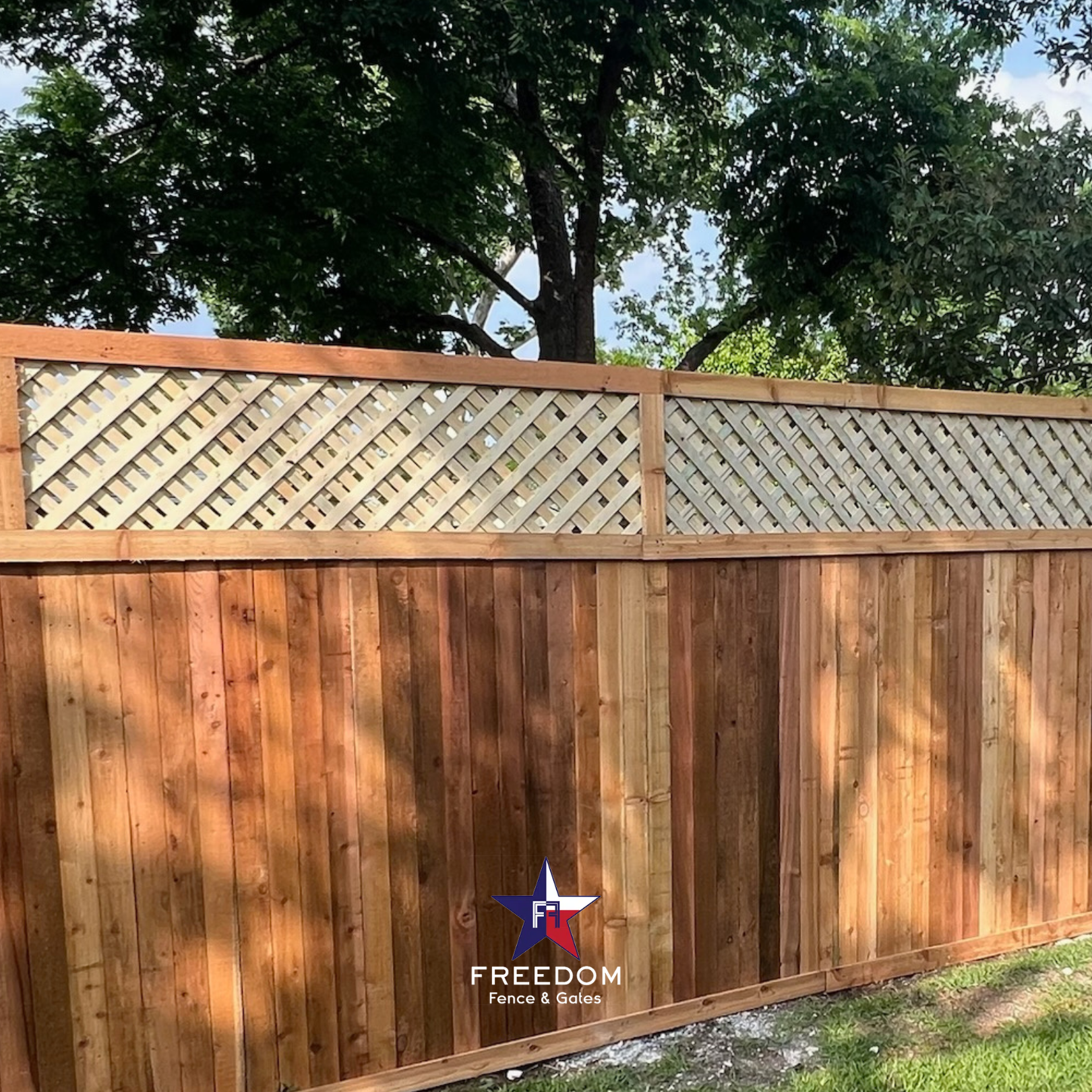
January is the perfect time to set goals for your home or business and start the year with fresh upgrades. Your fence and gate are not only essential for security but also play a key role in the aesthetic and value of your property. At Freedom Fence and Gates, your trusted Dripping Springs fence company, we’re here to help you turn your vision into reality. Here are some ideas to inspire your fencing and gate projects this new year. 1. Upgrade Your Fence for a Fresh Start A new year is an opportunity to give your property a refreshed look. Consider upgrading your current fence or installing a new one to enhance both functionality and style. Whether you’re interested in privacy fences for added seclusion, ornamental iron fences for an elegant touch, or durable vinyl fences for easy maintenance, there’s a fencing solution for every need. Customizing your fence to match your property’s design not only improves curb appeal but also increases value. 2. Add Security and Convenience with Automatic Gates For many property owners in Dripping Springs, automatic gates are a game-changer. They offer the perfect blend of convenience, security, and sophistication. Installing automatic gates can make your daily routine easier while providing added protection for your home or business. January is the ideal time to explore options like keypad entry systems, remote access, and custom gate designs that fit your unique style. 3. Plan for Long-Term Durability If you’ve been putting off fence repairs or upgrades, make it a priority this January. Harsh weather conditions, like occasional winter rain and wind in Texas, can impact the longevity of your fences and gates. Investing in quality materials and expert installation ensures your fencing solutions withstand the test of time. Our team at Freedom Fence and Gates specializes in crafting long-lasting fences and gates tailored to Texas properties. 4. Consider Modern Features for Your Property Modern fencing and gate features can elevate the functionality and aesthetic of your property. Decorative touches such as custom ironwork or lattice panels add personality, while smart technology like motion-sensor lighting or integrated cameras improves security. Upgrading your residential fences or commercial gates with these features can give your property a cutting-edge look for the new year. 5. Start the Year with a Trusted Partner Choosing the right Dripping Springs fence contractor is crucial for a successful project. At Freedom Fence and Gates, we bring expertise and attention to detail to every installation and repair. Whether you need residential fences for privacy or commercial gates for security, our team delivers solutions that fit your needs and style. Why Choose Freedom Fence and Gates? As a leading provider of fencing solutions in Dripping Springs, Freedom Fence and Gates offers high-quality materials, expert craftsmanship, and personalized service. From automatic gates to ornamental iron fences, we have the experience to help you achieve your property goals. Start Your New Year Project Today This January, take the first step toward enhancing your property with a new fence or gate. Whether you’re upgrading for security, style, or functionality, Freedom Fence and Gates is here to bring your vision to life. Contact us today to schedule a consultation and start your project off right.
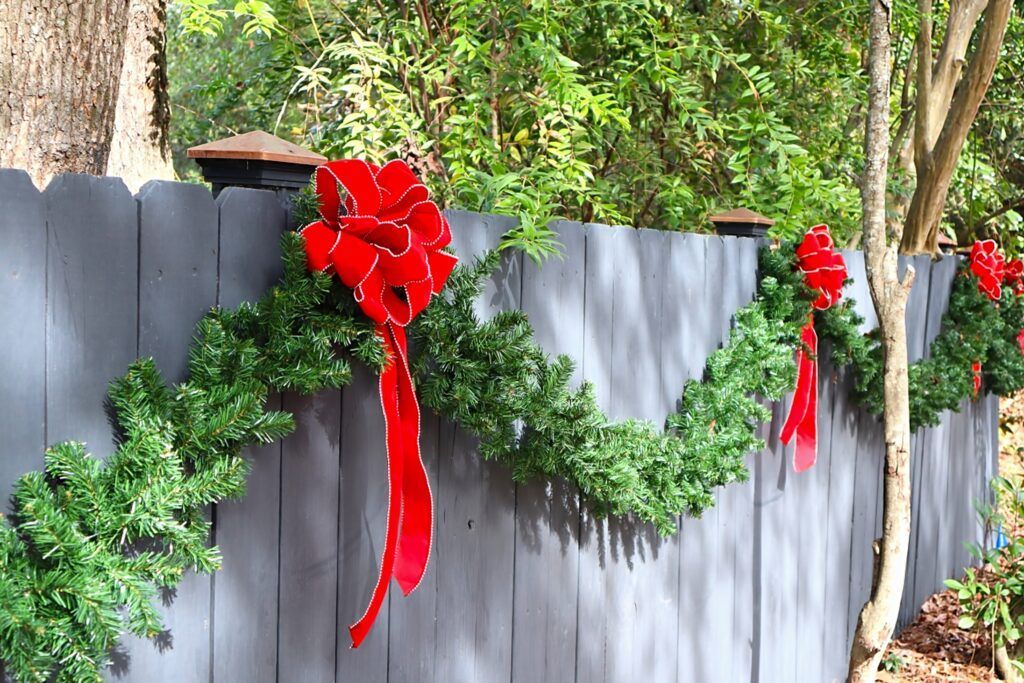
The holiday season is here, and it’s time to make your outdoor spaces in Dripping Springs, Texas, as warm and inviting as the celebrations themselves. Your fence and gate are more than just functional—they’re an essential part of your property’s curb appeal and can play a big role in your holiday decor. At Freedom Fence and Gates, your trusted Dripping Springs fence company, we’re here to inspire you with creative ideas to make your property shine this December. 1. Create a Festive Entrance with Your Gate Make your custom gate the star of your holiday decor. It’s the first thing guests see when they visit, so add some seasonal flair: garlands and wreaths frame your gate with greenery for a classic holiday look. Wrap your automatic gate in LED lights to create a warm, welcoming glow. Hang a cheerful “Happy Holidays” or “Welcome” sign to greet your visitors. A beautifully decorated gate enhances your property’s curb appeal and showcases your holiday spirit. 2. Transform Your Fence Into a Decorative Backdrop Your privacy fences and ornamental iron fences are perfect for displaying festive decorations. Use your fence as a canvas for string lights or glowing holiday figures. Add a pop of color by hanging weatherproof ornaments or bows along your fence line. Attach garlands or sprigs of holly for a natural, rustic look. Decorating your fence is a simple way to elevate your outdoor holiday spaces in Dripping Springs. 3. Set Up an Outdoor Gathering Area In Texas, December often brings mild weather, making it ideal for outdoor holiday gatherings. Use your fenced yard to create memorable experiences. Set up tables with festive centerpieces and outdoor heaters for a cozy atmosphere. Create a seating area around a fire pit, perfect for sipping cocoa or roasting marshmallows. Design a holiday photo booth with your fence as the backdrop, complete with seasonal props. Your fencing solutions provide privacy and a safe space for entertaining family and friends. 4. Consider Fence and Gate Upgrades If you’re looking to enhance your property before the new year, December is a great time to invest in upgrades. Install automatic gates for added convenience and security. Add decorative elements like lattice panels or custom ironwork to your ornamental fences. Refresh your residential fences with a new coat of paint or stain. These upgrades not only improve the look of your property but also boost its functionality and value. 5. Prioritize Security During the Holidays December brings increased travel and deliveries, making security a top priority. Keep your property safe with these tips. Upgrade locks and latches on your custom gates. Install motion-sensor lighting along your fence and gate. Consider reinforced commercial gates for additional protection. A secure fence and gate give you peace of mind while you enjoy the holidays. Why Choose Freedom Fence and Gates? At Freedom Fence and Gates, we specialize in high-quality fence installation and gate repair services in Dripping Springs, Texas. From enhancing your privacy fences to installing stylish and secure automatic gates, we’re here to help you create a property that’s both functional and beautiful. Celebrate the Holidays in Style Your outdoor spaces are an extension of your home, and with the right touches, they can become the perfect setting for holiday festivities. Whether you’re hosting a gathering or simply enhancing your decor, your fences and gates are key elements that make your property shine. Ready to transform your outdoor spaces? Contact Freedom Fence and Gates today to learn more about our services and how we can help you prepare for the holidays.
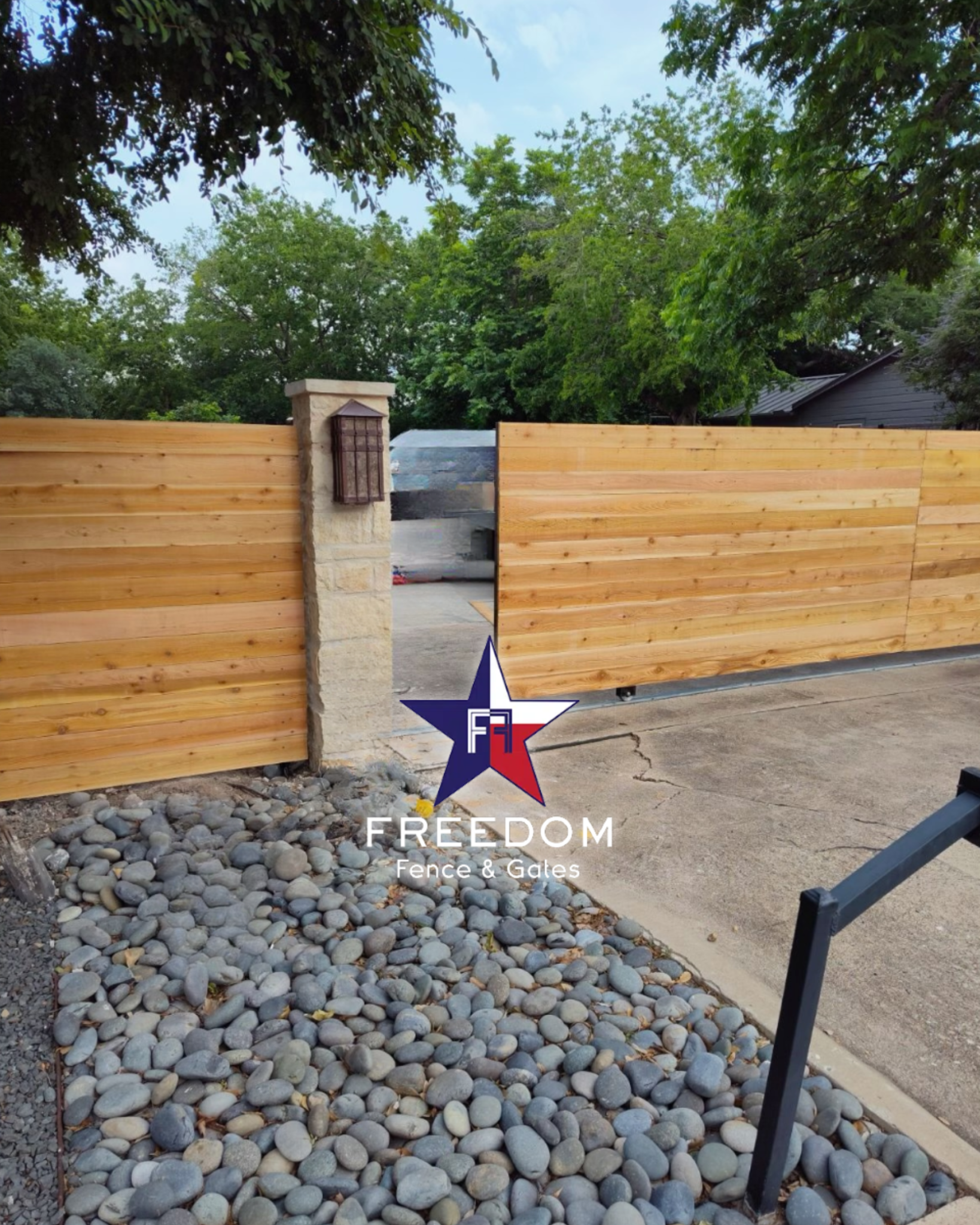
As November settles into Dripping Springs, Texas, it’s time to prepare your fence and gate for the cooler months ahead. Whether you’re looking to enhance your residential fence installation or maintain your automatic gates, a little attention now can save you time and money in the long run. At Freedom Fence and Gates, your trusted Dripping Springs fence company, we know how to protect your investment against the elements. 1. Inspect for Damage After Summer and Fall The Texas sun and seasonal storms can leave your privacy fences and ornamental iron fences vulnerable. Here’s what to look for: Wood Fences: Look for cracks, warping, or rot. Metal Fences: Inspect for rust or worn coatings. Vinyl Fences: Check for discoloration or cracks. Regular inspections ensure your fencing solutions are ready to handle winter conditions. 2. Clean and Protect Your Fence Cleaning your fence removes dirt, mildew, and debris that can accelerate wear: Use a pressure washer or hose for thorough cleaning. For wooden fences, apply a weatherproof sealant to protect against rain and moisture. Metal fences benefit from rust-resistant paint or sealant. Vinyl fences stay durable with a mild soap and water cleaning. Regular cleaning can keep your fence installation in Dripping Springs looking its best. 3. Maintain and Upgrade Gate Hardware November is an excellent time to ensure your custom gates and hardware are functioning smoothly. Here’s how: Check hinges, latches, and locks for stiffness or wear. Lubricate moving parts for easy operation. Ensure automatic gates have secure mechanisms and proper alignment. By maintaining your gate repair services proactively, you can avoid costly fixes later. 4. Trim Vegetation and Clear Debris Moisture buildup from leaves and overgrown vegetation can damage your residential fences. Trim back plants near the fence line and clear away any debris. This step not only protects your fence and gate but also enhances your property’s appearance. 5. Schedule Fence Repairs or Upgrades If your local fence company near Austin identifies significant issues, schedule repairs or consider upgrades. Whether it’s replacing a worn privacy fence or installing custom ornamental iron fences, now is the time to plan improvements. 6. Plan for Winter Weather Although winters in Texas are mild, occasional freezing conditions can affect your fence and gate maintenance. Protect your fencing solutions by ensuring they’re sealed against moisture and cold. Why Trust Freedom Fence and Gates? As a leading Dripping Springs fence contractor, we specialize in high-quality fence installation and gate repair services tailored to Texas homes and businesses. Whether it’s maintaining your commercial gates or upgrading your privacy fences, our team has the expertise to deliver lasting results. Contact Us Today Get ahead of winter and protect your investment with Freedom Fence and Gates. As your go-to fence contractors in Dripping Springs, we’re here to keep your property secure and looking great all year round. Contact us today to schedule a consultation or learn more about our services.

How to Keep Furry Friends Safe with Dig-Proof Fencing Are you a pet owner in Dripping Springs, Texas, constantly worried about your four-legged escape artist? At Freedom Fence and Gates, we understand the importance of keeping your furry friends safe while allowing them the freedom to enjoy your backyard. In this guide, we’ll explore how dig-proof fencing can provide the perfect solution for pet owners in the Hill Country. Why Dig-Proof Fencing Matters For many dogs, digging is an instinctive behavior. Whether they’re trying to escape, chase critters, or simply entertain themselves, a determined digger can quickly compromise a standard fence. This puts your pet at risk of: Getting lost Encountering traffic Conflicts with other animals Potential legal issues if they wander onto someone else’s property Types of Dig-Proof Fencing 1. L-Footer Fencing L-footer fencing involves burying a portion of the fence in an L-shape underground. This creates a barrier that dogs can’t dig past. 2. Concrete Barrier A concrete footer poured along the fence line prevents digging and adds stability to your fence. 3. Buried Chicken Wire Extending chicken wire from your fence into the ground creates an affordable dig-proof barrier. 4. Steel Mesh Panels Heavy-duty steel mesh panels can be installed at the base of your fence, both above and below ground. Benefits of Professional Installation While DIY solutions exist, professional installation by Freedom Fence and Gates ensures: Proper depth and installation techniques Use of high-quality, durable materials Aesthetically pleasing results that complement your property Compliance with local Dripping Springs regulations Consider these add-ons to further enhance your pet’s safety: Taller fencing for jumpers Self-closing gates Pet-friendly landscaping Invest in Peace of Mind Don’t wait for a close call to secure your property. Contact Freedom Fence and Gates today for a free consultation on dig-proof fencing options in Dripping Springs. Let us help you create a safe, secure, and beautiful outdoor space for your entire family – furry members included!
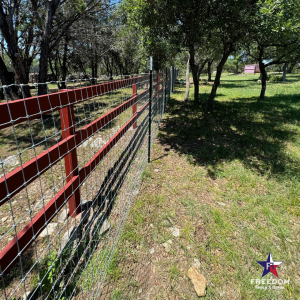
As the scorching Texas sun beats down on Central Texas, your fence stands as a silent guardian, protecting your property and enhancing its beauty. But just like any other part of your home, fences need regular care to withstand the harsh elements. At Freedom Fence and Gates, we understand the unique challenges that our hot climate presents for different fence types. Let’s explore why maintaining your fence is crucial and how to do it right. Iron Fences: Battling Rust in the Heat Iron fences are known for their strength and elegant appearance, but they face a formidable enemy in our humid Texas heat: rust. Regular Inspections: Check for any signs of rust, especially after rainy periods. Cleaning: Wash your iron fence periodically to remove dirt and debris that can trap moisture. Painting: A fresh coat of rust-resistant paint can work wonders in protecting your iron fence. Lubricating: Don’t forget to oil hinges and latches to prevent squeaking and sticking. Wooden Fences: Combating Warping and Drying Wood fences add a natural, rustic charm to any property, but they require special attention in hot climates. Sealing: Apply a quality sealant every 2-3 years to protect against moisture and UV rays. Staining: A good stain not only enhances the look but also adds an extra layer of protection. Checking for Pests: Inspect regularly for termites and other wood-boring insects that thrive in warm weather. Addressing Warping: Replace any severely warped boards promptly to maintain structural integrity. Farm Fences: Ensuring Durability for Your Animals Farm fences need to be sturdy enough to contain livestock while withstanding the elements. Tension Check: Regularly check and adjust the tension of wire fences, as heat can cause expansion and sagging. Post Inspection: Examine fence posts for any signs of rotting or instability, especially after heavy rains. Vegetation Control: Keep grass and weeds trimmed around the fence line to prevent moisture buildup. Repairing Promptly: Address any breaks or damages immediately to ensure the safety of your animals. Why Fall is the Perfect Time for Fence Maintenance As we transition from the intense summer heat to the milder fall temperatures in Dripping Springs, it’s an ideal time to give your fence some TLC: Comfortable Working Conditions: The cooler weather makes outdoor work more pleasant. Preparing for Winter: Address any issues before winter rains potentially exacerbate them. Dry Conditions: Fall typically offers drier weather, perfect for painting and sealing. At Freedom Fence and Gates, we’re more than just fence builders – we’re your neighbors. Our local expertise means we understand the specific challenges that Dripping Springs weather poses to your fences. Whether you need a minor repair or a complete fence overhaul, our team is here to help. Don’t let the Texas heat take a toll on your fence. Contact Freedom Fence and Gates today for a comprehensive fence inspection and maintenance plan tailored to your specific needs. Let’s work together to keep your fence strong, beautiful, and ready to face whatever weather comes our way!
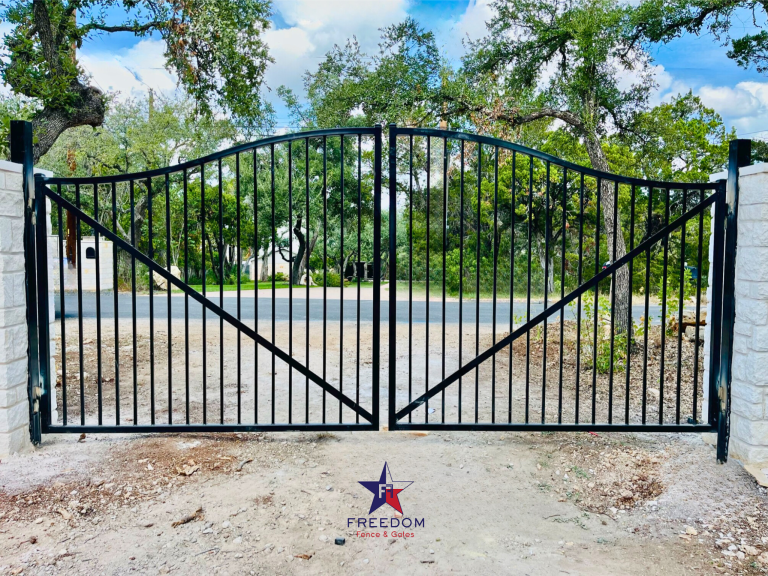
Automated gates are becoming increasingly popular for homeowners looking to enhance security, convenience, and property value. Here are the top five benefits of installing an automated gate: 1. Enhanced Security Automated gates provide a robust barrier against unauthorized entry, making it difficult for intruders to access your property. They often come with advanced security features like intercom systems, cameras, and keypad entry, ensuring that only authorized individuals can gain access. 2. Increased Property Value An automated gate is a valuable addition to any property, significantly increasing its market value. Potential buyers appreciate the added security, convenience, and aesthetic appeal that an automated gate offers, making your home more attractive in the real estate market. 3. Convenience and Ease of Access With an automated gate, you no longer need to manually open and close your gate. Whether you are arriving home during inclement weather or leaving in a hurry, the convenience of remote-controlled access saves time and effort. Some systems even offer smartphone integration for added ease. 4. Improved Aesthetic Appeal Automated gates come in various designs and materials, allowing you to choose one that complements your property’s architecture and landscaping. This not only enhances the overall look of your home but also adds a touch of elegance and sophistication. 5. Privacy Control For those who value their privacy, an automated gate provides an effective way to control who enters your property. It acts as a physical and visual barrier, preventing unwanted visitors and reducing the likelihood of disturbances. This is particularly beneficial for homes located in busy or high-traffic areas. In conclusion, installing an automated gate offers numerous advantages, from boosting security and property value to enhancing convenience and aesthetics. If you’re considering this upgrade, it’s an investment that can pay off in many ways.

Choosing the right fence for your yard involves balancing aesthetics, security, privacy, and durability. Understanding your options will help you make an informed decision, ensuring your choice complements your yard and serves its intended purpose effectively. Freedom Fence & Gates shares what you need to consider. Understand Your Needs Your property’s location informs your fencing requirements. Are you looking to keep deer out, maintain privacy, or block the wind? If you are dealing with local wildlife, a solid privacy fence may serve your needs, preventing deer from jumping into your garden beds. Privacy and Security A strong desire for many homeowners is a fence that provides privacy and security. A closely spaced lattice combined with climbing plants offers a natural look while blocking unwanted views. In terms of security, a fence with no place to grip and a height of at least 8 feet, possibly with a sturdy, lockable gate, is advisable. Remember, for homes near busy streets, a fence that allows some light through while ensuring privacy may be more desirable. Contending With the Wind If the local area’s breezy conditions are a concern, opt for a design that allows wind to pass through without sacrificing too much privacy or choose sturdy materials that can withstand the elements. Glass panels, as seen in some of the more upmarket installations, offer a windbreak without obstructing views. Material Choices Matter Materials like wood, vinyl, and aluminum vary in terms of appearance, maintenance levels, and durability. Wood fences offer a traditional look and can be painted or stained to match your home, but they require more upkeep. Vinyl fencing, offering durability and low maintenance, might be a better choice for busy homeowners or those seeking a long-lasting solution. Aluminum or wrought iron presents a more open and decorative look, suitable for pool enclosures or ornamental gardens. Local Regulations and Installation Before making any final decisions, it’s crucial to check local building codes and homeowners association (HOA) regulations, if applicable. These could influence your fence’s height, style, and materials. Always have a clear understanding of your property lines and ensure any design you choose complies with local guidelines to prevent future disputes or the need for costly modifications. Freedom Fence & Gates is your go-to fence installation contractor in and around Dripping Springs, TX. No matter your personal taste, terrain or timeline, we’re up to the task of building the perfect fence for your yard. Get in touch with us by calling (512) 897-0406 or filling out our contact form to schedule an appointment.


